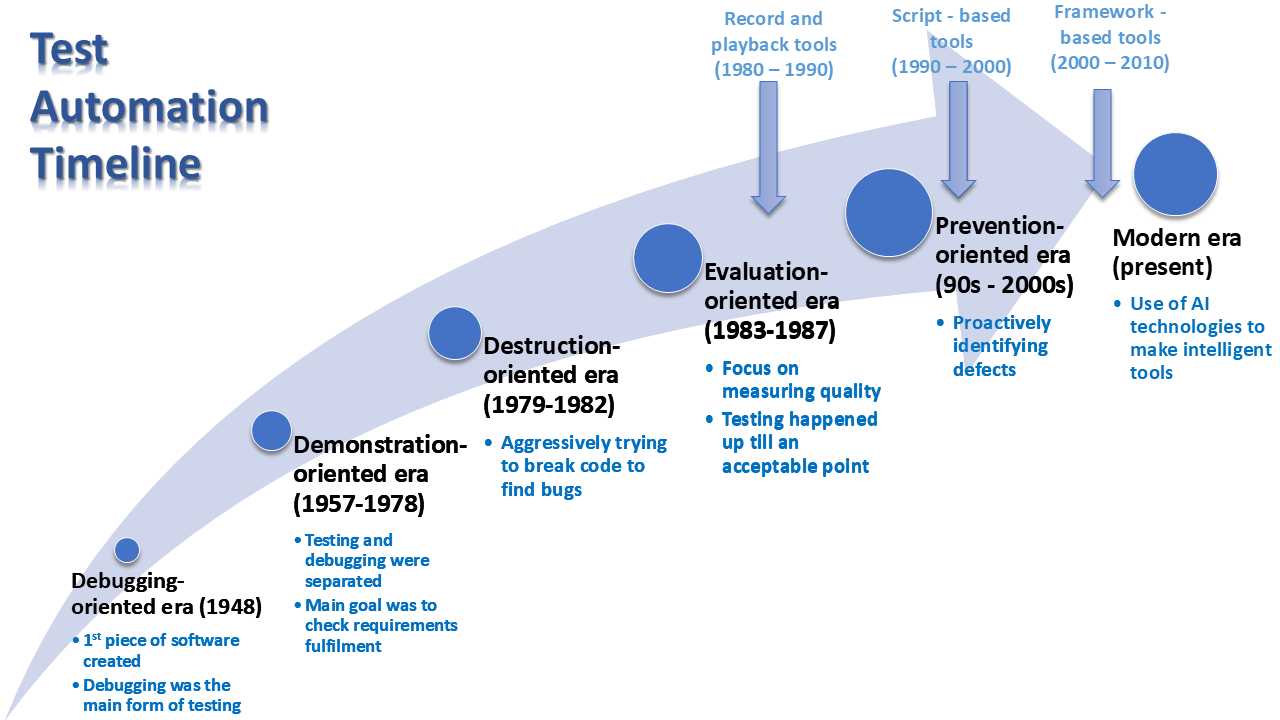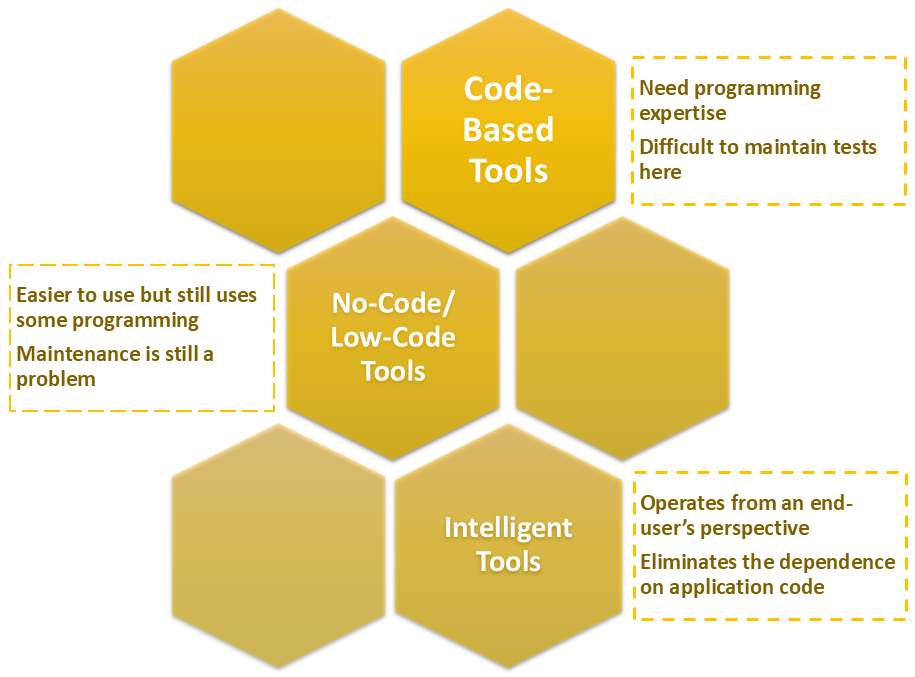Why No-Code / Low-Code Test Automation Tools Don’t Work
|
|
A tester’s ultimate dream is to say ‘Hakuna Matata’ during the testing cycle. You might have even dreamt of this utopia where this No-code Test Automation Wonderland exists.
With just a few clicks, the system comes to life. All those woeful bugs hiding are hunted down by brave knights in shining armor and presented to you in ceremonial reports, which also chronicle these hunts. All this while you sit in the throne room and relax. And now, with AI (artificial intelligence) and its kin in the mix, the world of test automation seems even more magical.
Endless possibilities are promised.
Want to build forts (test cases) to safeguard your nation? Just ask cousin Gen-AI (generative AI), and she’ll mobilize her brethren. Need super smooth roads (for test execution) that adapt (self-heal) to all those indigenous vehicles in your land? Pay a visit to old Uncle ML (machine learning). But what if the new architect in town is from a far-off land, speaking a different tongue? This is a piece of cake for the AI clan. Aunt NLP (natural language processing) is the perfect interpreter.
But is this ‘Codeless Testing Wonderland‘ really that wonderful?
Because if you’ve bought a ticket to this Wonderland, you must have realized that the poster often does not match the movie. What is being promised in the name of no-code or low-code often results in further delays and wasted efforts.
And let’s be clear: this skewed fantasy isn’t a flop show because of the participants, test automation, and clan AI. They are wonderful and powerful technologies that have the potential to make test automation an outstanding experience. It all turns into a nightmare because, in most cases, companies market the utopia instead of being truthful, conjuring a picture of a fake Wonderland.
It seems bleak, doesn’t it? It isn’t, actually.
While most projections might give you a poor experience, there is still a ray of hope – a chance to experience slices of that Wonderland.
To understand this better, we need to examine how and why the picture of test automation is distorted. To do so, you need to understand the three broad categories of test automation tools since their inception. You can view these categories as generations that depict the evolution of test automation tools, although they aren’t official classifications based on technical expertise. Rather, this depiction shows a natural, experience-based view.

Manual to Automated Testing
During the initial years of software development, manual testing was born out of necessity. Developers needed a way to ensure that what their brilliant minds produced was brilliant even in the real world. Manual testing, while still being a very important skill for testers, was not sustainable for many obvious reasons.
As software development gained traction, the market started seeing an influx of these applications. More developers started getting busy, which meant more testing was needed. Thus, manual testers were employed to do this. Every code change, however, needed to be tested, which meant a lot of repetitive or regression testing. Since the applications had to be shipped out soon to stay competitive in the market, it meant less time to do this testing. With time, it was clear that humans alone could not do this repetitive testing in short bursts of time.
Enter test automation tools.

First Generation: Code-Based Tools
These tools were a breakthrough in software testing. Now, testers only needed to write programming test scripts, that is, test cases but the kind that systems can run, and let the machine do the repetitive work. In fact, you must be familiar with Selenium. It’s so popular that it’s synonymous with software testing for most!
They may not know what test automation is, but ask them if they know Selenium and their face will light up. Selenium’s popularity isn’t unfounded. It is a versatile tool and does help a lot with test automation. Have you noticed that writing these coded test scripts is equivalent to: Writing code today to test what programmers coded yesterday?
Also, here are a few more issues about these types of tools.
- Programming Skills Required: You need to write code and know a programming language to be able to use these tools. Your in-house manual testers may not be able to handle this. It means that you need these very skilled people who know both coding and testing. This could burn some serious holes in your pocket.
- Really Slow to Create: Imagine that your application is growing and doing very well. But you’ve to write test cases, nay, code test cases, and also run them and monitor them. The whole process is very slow and time-consuming. To create, say, 120 test cases of medium complexity, you might end up spending a year.
- Messy Maintenance: The smallest of changes, like a button name change, can throw your entire test suite for a toss. Then, instead of writing new test cases for the new features, you’re stuck cleaning up this mess. Once you reach a 350 test case mark, you spend more time in maintenance than new test creations.
- Talent Retention is a Nightmare: If these skilled automation testers leave your organization in between, then the whole process of maintenance and test creation becomes a nightmare for the new hire. We all know the reason: it is very complex to understand someone else’s code and make further progress.
Second Generation: No-Code/Low-Code Tools
We now come to another category of tools. As a step away from having to code test cases, the no-code and low-code tools offer creative ways to save you from having to do this. Some of the ways in which these tools let you create test cases are:
- Drag and Drop Interfaces: Where users can visually construct test flows by dragging and dropping pre-built components onto a canvas.
- Record and Playback: These tools let users record their interactions with the application, and the tool automatically generates test scripts.
- Keyword-driven Testing: Where users can create reusable test steps using keywords and combine them to form complex test cases.
- Hybrid of All: The hybrid approach where these tools combine visual interfaces with scripting capabilities which allows users to create complex tests by writing code for specific actions or conditions.
At the surface level, these tools seem to be superb – they allow easy test case creation. This meant that everyone could automate. But look under the surface, and you’ll see that they work on some disguised code underneath, and hence, the same maintenance problems stay. In fact, in most of these tools, you will have to write some code to achieve complex or custom operations. So, while these tools solved the two problems of speed and skill, enormous test maintenance still existed.
Other issues with these tools are their limited flexibility and inability to test large-scale applications. This approach works well for small and even medium-sized applications. But as the volume and complexity increase, these tools fail to keep up.
With complex applications, you need tools that can capture user workflows, and these tools struggle to offer that specification-driven behavior. This is what most of these no-code and low-code tools promise but fail to do. This is probably where you must have faced disappointment when working with them. The tests do not reflect the end user’s behavior, and there is a silo.
Third Generation: AI-Based Intelligent Tools
If you carefully look at the above two categories of tools, you’ll notice that they offer test automation but don’t possess that ‘intelligence‘ and replication of human behavior. You can delegate repetitive tasks but must be constantly involved in their operations and closely monitor them. Quite like babysitting a toddler, they can walk, but their walk is not stable enough, and neither can you leave them unsupervised for fear of them getting into trouble.
This is the perfect segue to discuss our next group of tools—the lot with intelligence. Thanks to AI, we are now getting closer to our actual ‘Codeless Test Automation Wonderland‘.
Endless Possibilities of Intelligent Test Automation

If you are familiar with the different methodologies of testing like test-driven development (TDD) and behavior-driven development (BDD), then you’ll notice that with the above two tool groups, we were still at the stage where we always thought from a tester’s or developer’s perspective first. But finally, with AI, we are able to stand up on the evolution chart of test automation and think from an end-user’s perspective. How would they use this system? Would this change in the application affect them?
This way of thinking is what drives this new breed of powerful codeless automation testing tools, including testRigor.
No-code Test Automation with testRigor
With code-based, low-code, and no-code/codeless tools, test cases were always anchored on the implementation details of what appeared on the screen. So, if you want to click on a button, you need to know the lineage of said button – XPath, CSS, and whatnot. This is precisely what causes test maintenance woes and flakey test runs because the slightest change in the code and multiple casualties occur within a test suite.
testRigor does things differently. It emulates a human, and it is an AI agent. What does that mean, you might think?
Do you remember our clan AI? Generative AI, NLP, ML (and there are many more!)?
testRigor uses these technologies under the hood to make sure that it does not use any implementation details of UI elements. This tool works on your ability as a human to give it specifications about the application that needs testing.
click “Login”
That is it!
login enter "Kindle" into "Search" press enter click "Kindle" click "Add to cart" check that page contains "Item Added to Cart"
testRigor uses ‘its brains’ to figure out where said ‘login’ button is on the screen. You can also make use of other smart features, including automatically generating test cases based on the app’s descriptions. So essentially, you’re now writing automation test scripts like you would write manual test cases, that is, in plain English language, just the way you see it on the screen.
Apart from this, using AI also reduces test maintenance to a bare minimum, as we are no longer dependent on implementation details. Also, it has the capability to adapt the test scripts when any UI or requirement changes happen. Many of the scenarios that you will encounter when automating end-to-end user flows are available here as simple English statements, such as working with tables, email, phone calls, file upload, SMS, 2FA scenarios, QR Code, Captcha resolution, and much more.
Check out the complete list of testRigor’s features to get an idea of what this powerful tool can do, all in plain English from an end user’s perspective.
Conclusion
The dream of a ‘Hakuna Matata’ testing cycle, where codeless automation truly feels effortless—can finally be realized.
With testRigor, gone are the days of pulling your hair out over broken tests, complex scripts, talent retention issues, and endless maintenance. Instead, you can focus on what truly matters: ensuring that your software delivers exceptional user experiences. With testRigor, automation is no longer a frustrating journey—it’s a smooth, empowering ride toward excellence.
Welcome to real codeless test automation, where simplicity meets intelligence and gives way to freedom.
| Achieve More Than 90% Test Automation | |
| Step by Step Walkthroughs and Help | |
| 14 Day Free Trial, Cancel Anytime |












